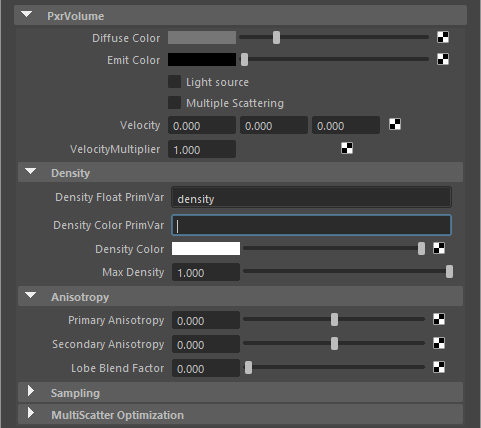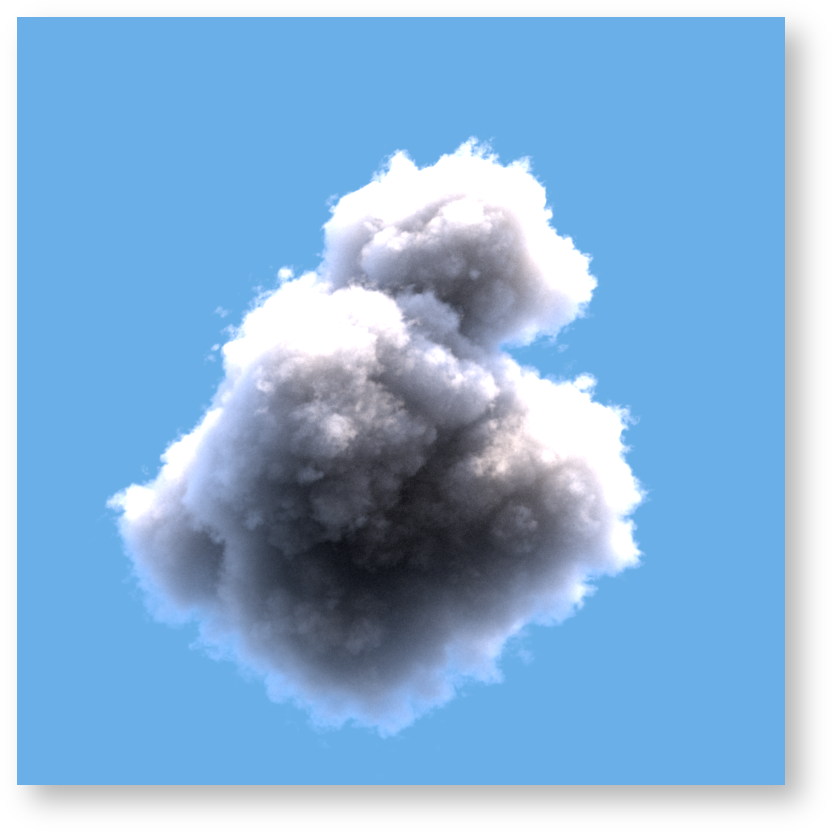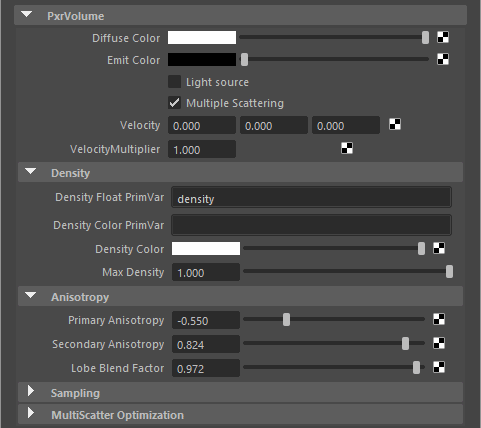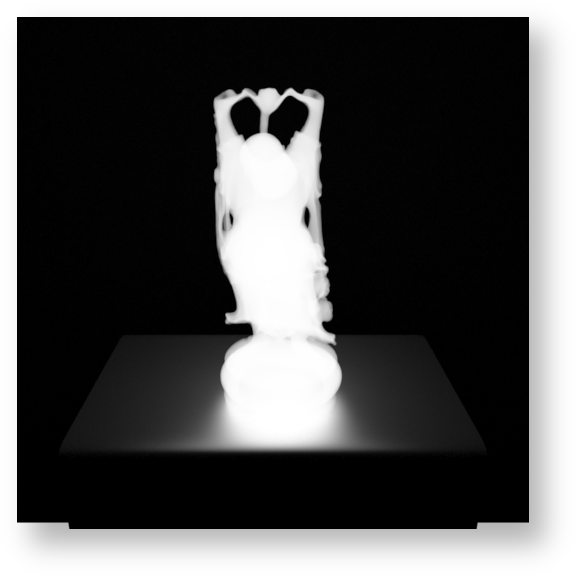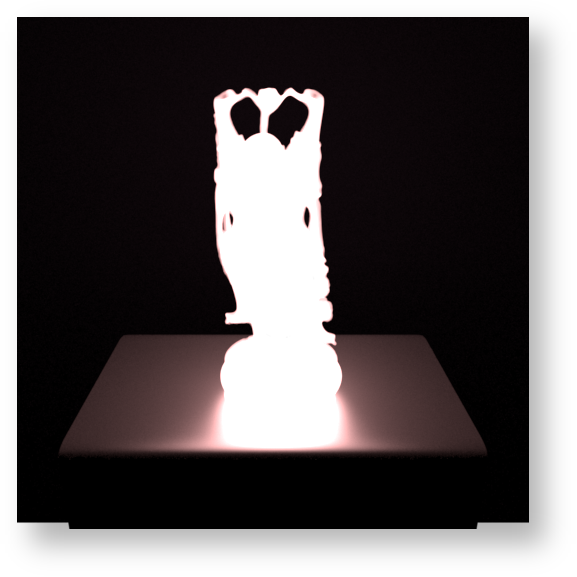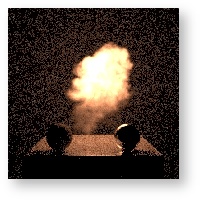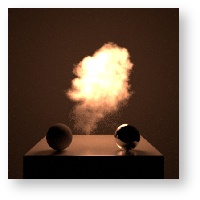...
Since smoke is typically isotropic, the Anisotropy settings can be left at their default. The Equiangular weight can be left as is if it is expected that there are light sources near to, or within the volume, or set to 0.0 if no light sources are expected to be anywhere close to the volume.
Clouds
Clouds are very difficult volumes to render, because the aggregate behavior of water droplets and their interaction with light is a complicated phenomenon. Unlike smoke, the light that reaches the eye from a cloud has typically bounced inside the cloud tens or hundreds of times. On top of that, the scattering behavior (the way light bounces inside the cloud) is very complicated, as it involves both forward scattering and backwards scattering, with multiple peaks for both.
...
| Info |
|---|
Note that scattering in the volume is controlled by the Max Path Length parameter in the chosen integrator and not the individual diffuse and specular trace depths. You can find more information on this under the section below called Multiple Scattering. |
...
...
Advanced Workflows
Crepuscular Beams
...
The emissive color of the volume. This is useful for modeling effects such as phosphorescent fog or fire. Default is black (0,0,0), i.e. the volume will not emit light. The following images demonstrate an emit color setting of (1, 1, 1) and (5, 2.5, 2.5), with no other light sources in the scene.
Light Source
When this option is selected, the emissive properties of the volume are sampled as a light source. This may brighten your scene through improved sampling. Note that the emit color cannot be black for this to operate. With a single scatter volume, even at maximum path length 1, it is equivalent to a multiscatter volume with the light source option turned off. Below is off versus on.
Multiple Scattering
...

